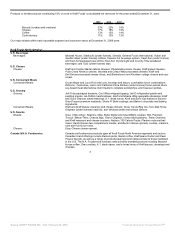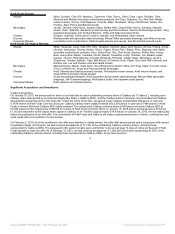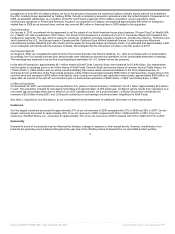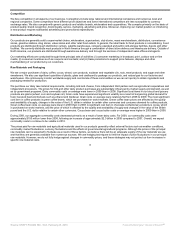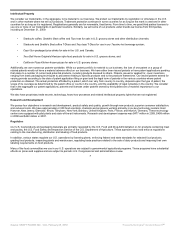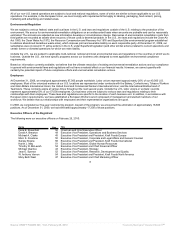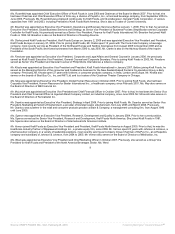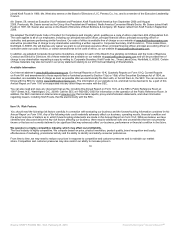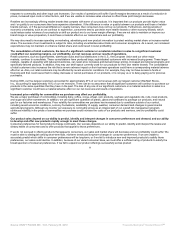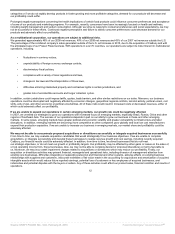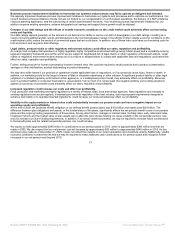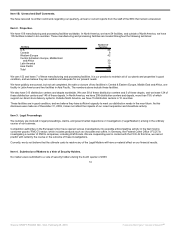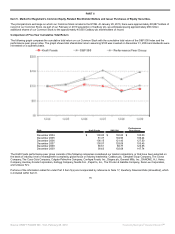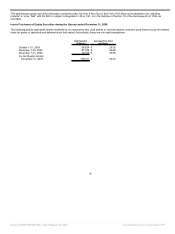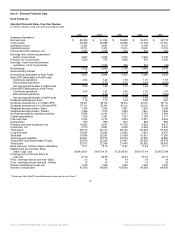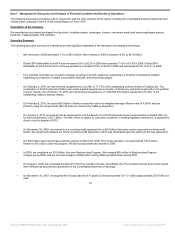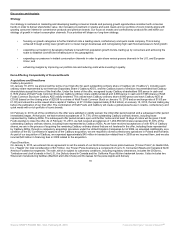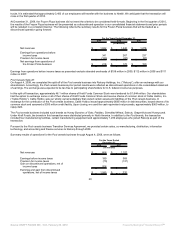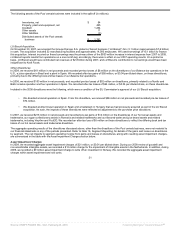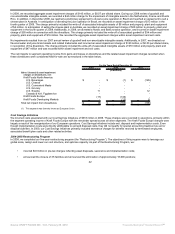Kraft 2009 Annual Report Download - page 16
Download and view the complete annual report
Please find page 16 of the 2009 Kraft annual report below. You can navigate through the pages in the report by either clicking on the pages listed below, or by using the keyword search tool below to find specific information within the annual report.
Business process improvement initiatives to harmonize our systems and processes may fail to operate as designed and intended.
We regularly implement business process improvement initiatives to harmonize our systems and processes and to optimize our performance. Our
current business process initiatives include, but are not limited to, our reorganization of our European operations, the delivery of a SAP enterprise
resource planning application, and the outsourcing of certain administrative functions. If our business process improvement initiatives fail, our
ability to improve existing operations, achieve anticipated cost savings and support future growth could be delayed.
Changes in our debt ratings and the effects of volatile economic conditions on the credit market could adversely affect our borrowing
costs and liquidity.
Our debt ratings depend generally on the amount of our debt and our ability to service our debt. A downgrade in our debt ratings, including as a
result of incurring additional debt, would, and disruptions in the commercial paper market or the effects of other volatile economic conditions on the
credit market could, reduce the amount of commercial paper that we could issue. In addition, any of these risks could raise our borrowing costs for
both short-term and long-term debt offerings.
Legal claims, product recalls or other regulatory enforcement actions could affect our sales, reputation and profitability.
As a large food company that operates in a highly regulated, highly competitive environment with growing retailer power and a constantly evolving
legal and regulatory framework around the world, we are subject to heightened risk of legal claims or other regulatory enforcement actions. Legal
claims or regulatory enforcement actions arising out of our failure or alleged failure to comply with applicable laws and regulations could adversely
affect our sales, reputation and profitability.
Further, selling products for human consumption involves inherent risks. We could be required to recall products due to product contamination,
spoilage or other adulteration, product misbranding or product tampering.
We may also suffer losses if our products or operations violate applicable laws or regulations, or if our products cause injury, illness or death. In
addition, our marketing could be the target of claims of false or deceptive advertising or other criticism. A significant product liability or other legal
judgment or a related regulatory enforcement action against us, or a widespread product recall, may adversely affect our profitability. Moreover,
even if a product liability or consumer fraud claim is unsuccessful, has no merit or is not pursued, the negative publicity surrounding assertions
against our products or processes could adversely affect our sales, reputation and profitability.
Increased regulation could increase our costs and affect our profitability.
Food production and marketing are highly regulated by a variety of federal, state, local and foreign agencies. New regulations and changes to
existing regulations are issued regularly. Increased governmental regulation of the food industry, such as proposed requirements designed to
enhance food safety or to regulate imported ingredients, could increase our costs and adversely affect our profitability.
Volatility in the equity markets or interest rates could substantially increase our pension costs and have a negative impact on our
operating results and profitability.
At the end of 2009, the projected benefit obligation of our defined benefit pension plans was $10.6 billion and assets were $8.9 billion. The
difference between plan obligations and assets, or the funded status of the plans, significantly affects the net periodic benefit costs of our pension
plans and the ongoing funding requirements of those plans. Among other factors, changes in interest rates, mortality rates, early retirement rates,
investment returns and the market value of plan assets can (i) affect the level of plan funding; (ii) cause volatility in the net periodic pension cost;
and (iii) increase our future funding requirements. In addition, if we divest certain businesses, we may be required to increase future contributions
to the benefit plans and the related net periodic pension cost could increase.
We expect to make approximately $240 million in contributions to our pension plans in 2010, which is approximately $380 million less than we
made in 2009. We also expect that our net pension cost will increase by approximately $50 million to approximately $440 million in 2010. As this
disclosure was made as of December 31, 2009, it does not reflect the impacts of our recent acquisition and divestiture activity. Additionally, volatile
economic conditions increase the risk that we may be required to make additional cash contributions to the pension plans and recognize further
increases in our net pension cost beyond 2010.
13
Source: KRAFT FOODS INC, 10-K, February 25, 2010 Powered by Morningstar® Document Research℠


